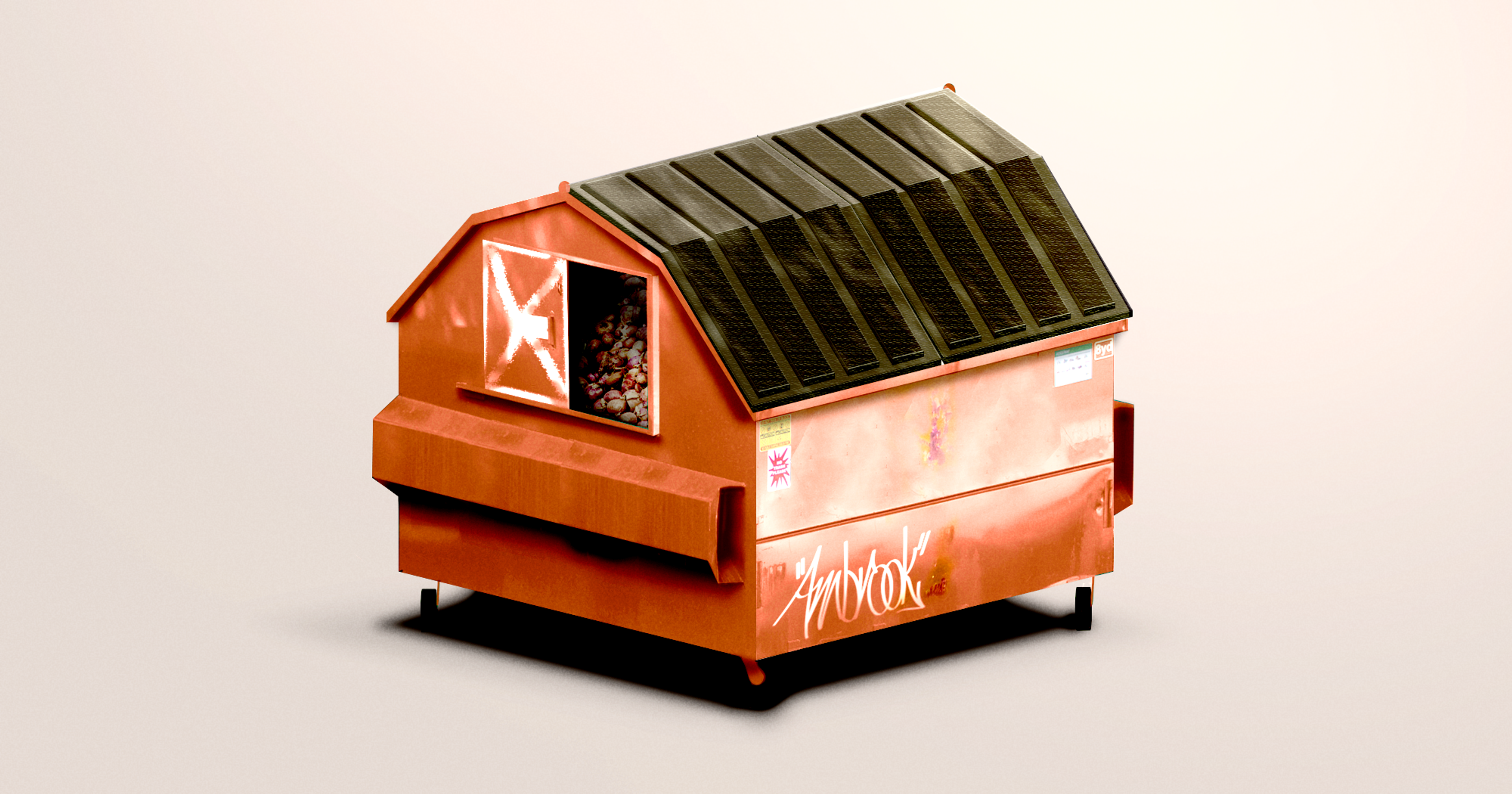At the height of the pandemic, farmers were forced to dump millions of pounds of perfectly edible produce. Four years later, they still need help with their surpluses.
When West Virginian apple farmers were faced with more than a 16-million-pound surplus this September, some orchards worried their only option was to pile up their fruit and burn it. It wouldn’t have mattered that Feeding America estimates one in nine West Virginians go hungry each year. There’s simply a limit to what a single orchard can do with that volume of fruit.
Luckily for those farmers, however, the West Virginia Department of Agriculture sought a partner in The FarmLink Project, a national nonprofit started in 2020 by a group of college students in Southern California who’d seen TikToks of farmers dumping millions of pounds of onions and milk when the supply chain buckled during the pandemic. Those same college students were also seeing news reports of growing food insecurity, and food banks under unprecedented strain. With their summer internships on hold, they mobilized to perform agricultural heroics: transporting more than 10,000 eggs from a farm outside Los Angeles back to food banks in the city.
Four years later, the FarmLink team now has dozens of similar stories to tell — just swap in onions for eggs. Or potatoes. Or apples. By January 2023, the organization had rescued over 100,000,000 pounds of food from farms and delivered $5,400,000 in financial relief to farmers and truckers, according to their 2022 annual report.
FarmLink’s team estimates the recent apple operation — which distributed 13.5 million pounds of apples to more than 80 anti-hunger charities — was one of the largest harvest rescues ever performed in the United States. That said, it’s still a drop in the bucket of on-farm food waste.
Farmers regularly have to deal with surprise surpluses that eat into their labor and planning costs. It’s a problem, and not just because of the pressure those surpluses put on farmers: The U.S. Department of Agriculture (USDA) estimates that nearly 13% of US households are food insecure. At the same time, 108 billion pounds of produce go to waste in the U.S. annually, according to the Farmlink report, accounting for 58% of our landfill methane emissions. And while food waste has become a hot topic — growing hotter everyday thanks to those greenhouse gasses — the related issue of food loss, or food that’s lost before it even makes it to the consumer, is less studied and less understood.
Jean Buzby, food loss and waste liaison at the USDA, said there’s a prevailing notion that “food loss” is an issue isolated to developing nations — where agricultural infrastructure may not be robust enough to keep up with production — whereas “food waste,” which refers to food thrown away at the consumer level, is what kids in 2010 might have called a “first-world problem.” But on-farm food loss represents a significant challenge in the U.S., where roughly 42% of the edible food grown never makes it out of the field — often due to labor shortages, cosmetic imperfections, and market fluctuations — according to studies conducted by food loss expert Lisa K. Johnson.
And while consumer food waste has enjoyed steady attention from governments and institutions, the federal government may soon take food loss as seriously, too. One hint: USDA’s National Institute for Food and Agriculture is investing $15 million in grants to help link food producers to food recovery and emergency feeding organizations, according to December’s national strategy proposal for reducing food loss and waste, co-authored by the EPA, USDA, and FDA.
“They’re running a farm. They’re not always able to sit down at a computer and research options for what to do with their extra crops.”
Those relationships are critical to the food rescue efforts happening on a local scale, where the need for fresh, affordable produce remains enormous. In eastern Massachusetts, a food rescue ecosystem has sprouted. Now farmers, food pantries, gleaners, and distributors are working to get local produce into hungry mouths instead of dying on the vine, being re-tilled into fields, going straight to compost, or rotting in a landfill.
But like many ecosystems, this one is fragile. And it’s being pushed to its limits by growing demand from food-insecure neighbors.
“A lot of what we’re hearing from our recipients is, ‘It’s great. Can we just get more?’” said Rachel Albert, executive director of Food Link, a Boston-area food rescue nonprofit serving 90 anti-hunger agencies. (Food Link is unaffiliated with FarmLink.) “The need just keeps growing. We’re finding that all the food rescue organizations in our area have waitlists now, including us.”
Food Link receives some food donations from area farms directly, but will often get them through the Boston Area Gleaners, a separate nonprofit headquartered in nearby Acton.
David Wadleigh, co-owner of Kimball Fruit Farm in Pepperell, Mass., said he’s been working with the Gleaners and their corps of volunteer harvesters for over 15 years. In addition to free help in the field, the Gleaners can provide trucking services to farmers who are unable to transport their own big hauls. That came in especially handy when last season’s biblical rains gave way to a massive crop of cucumbers.
“We had guys coming in from picking, like, ‘I don’t know why there’s so many cucumbers,’” Wadleigh explained over Zoom. “And the Gleaners did end up taking them, but there was a couple of times where they didn’t know if they could use all of them because there were so many.”
The perishability of fresh produce means some food rescue missions are ticking time bombs.
The Gleaners have also trucked away large quantities of their McIntosh apples — a one-time favorite cultivar in New England that’s since fallen out of fashion to make room for its crunchier cousin, Honeycrisp. There have been years at Kimball Fruit Farm where the Gleaners have left with around 400 bushels of unsellable McIntoshes, which Wadleigh said are naturally squishier than other varieties and go bad quicker in storage.
The perishability of fresh produce means some food rescue missions are ticking time bombs. “It’s got a matter of days, maybe weeks in some rare cases, where it’s got to go,” Reilly said of the produce they recover at FarmLink. Carting off and distributing large amounts of even the sturdiest veg involves a lot of moving parts and helping hands — and farmers like Wadleigh rely on the support of an increasingly diverse set of food rescue programs to do it without hemorrhaging money. Donations aren’t nearly as lucrative as retail, but farmers can recoup some expenses with tax write-offs.
Alyssa Ciolfi, the Gleaners’ communications manager, said part of their mission is to take logistics off farmers’ proverbial plates. “They’re running a farm. They’re not always able to sit down at a computer and research options for what to do with their extra crops. They just don’t have the time,” she said. “And it’s an art, not a science. You don’t know what weather is going to be like one season over another. It’s very unpredictable.”
Even in controlled agriculture settings — where the growing is a carefully monitored science — some degree of excess produce is still inevitable. Isabelle Amlicke of Little Leaf Farms, a hydroponic lettuce grower in Devens, Mass., explained via Zoom that natural factors like sunlight can increase their yield, but volatile market conditions dictate what they can sell. She can tweak the water’s pH and the greenhouse temperature all she wants, but a dip in demand means excess lettuce. Instead of throwing it out, Little Leaf donates to partners like Food Link, which handles the distribution to local anti-hunger groups.
For the founders of FarmLink, any meaningful solution to food loss starts and ends with partners on the ground who are trusted in their communities. Moving 13.5 million pounds of apples to food pantries is a feat. But if those apples don’t get into the hands of hungry people, all that fruit is still a waste.
“We want to empower the organizations who have the community’s trust and who have set up a system to hand out food with dignity,” Reilly said over Zoom. “That is one of the lasting ways that we can have structural changes.”










